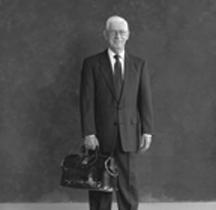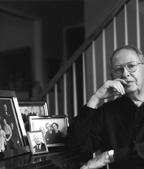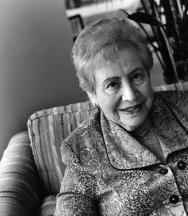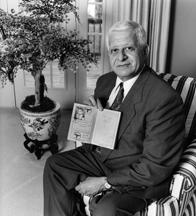
Over the last two years, Midwest Center for Holocaust Education staff have worked to preserve audio and videotaped testimonies of local Holocaust survivors and to make them accessible to the public on the MCHE website. These testimonies cover the geographic range of European Jewish experiences in the Holocaust as well as a variety of circumstances, including forced labor, hiding, death camps and emigration in the 1930s. This collection, available at www.mchekc/survivors, includes:
• 40 condensed versions of video testimonies gathered in 1994 during MCHE’s Witness to the Holocaust project (transcripts will be available in 2016)
• 49 audio interviews conducted as part of MCHE’s Portrait 2000 exhibit, as well as transcripts of the interviews, which focus on pre- and postwar experiences
• 73 individual survivor profiles, complete with supplemental resources to enhance understanding of each survivor’s unique experience
• In addition to online holdings, full-length, original versions of the video testimonies are available for onsite viewing by researchers and other patrons.
The video versions of these testimonies were originally recorded in 1994. The audio versions were recorded in 1999 and 2000. The audio testimonies were digitized in 2014-2015. The video testimony was digitized in 2006 then edited for classroom use in 2007-2008.

The first testimony was placed on the website in January 2014, and approximately six or seven more were added each month through 2015. Jessica Rockhold, MCHE director of education, believes this is one of the most important projects MCHE has done since she began working for the organization in 2003.
“What we do demands us to personalize this history and to make the local survivors the focus of that personalization, and this just hits every point of our mission. It gives people access, it promotes these very local stories and it’s a project we’re just real proud of,” Rockhold said.
MCHE’s Executive Director Jean Zeldin said even more impressive than having the testimonies on the website — making them readily available to anyone at any time 24/7 — is that fact that other information is now linked to the testimonies.
“If you go to a testimony on the website, you will see that there are links to maps and documents and other resources that enhance the story of that particular individual and that’s all Jessica’s doing,” Zeldin explained.

Rockhold said the links were added to the testimonies to enhance their educational value.
“We wanted this site to be a place where if somebody was interested, they could immediately get access to more information and not have to wait to call us. If they are doing this at 1 a.m. and they want to know about Sachsenhausen concentration camp, here are five resources that they can link to,” Rockhold explained.
MCHE has been adding testimonies a little at a time for the past two years, so the organization already has an idea how they are being used. For instance they know students are using the testimonies through tracking data on the website.
Rockhold also sees this as a huge benefit for the families of these survivors.
“Now they have access no matter where they are. Before they would have to physically come in to our office to get access to some of these testimonies,” said Rockhold, noting that survivors were all originally given copies of the tapes, but many have been misplaced over the years.
In addition, MCHE hopes the online testimonies will expand their reach regionally, nationally and even internationally.
“We hope that it is not just the Kansas City metropolitan area that can access this, but Kansas and Missouri and even into Nebraska and Oklahoma. We get requests from teachers and just people who are learning all the time and one of their questions is what can you provide for us, we live several hours away. Now this is one of the things that we can provide for them,” she said.
Rockhold said it’s been interesting what they can learn from tracking numbers.
“There are a few survivors who are particularly well known and their pages are always getting hits because people know them and they are interested in finding their stories. But we also saw that whoever was new that month was getting a lot of hits. What that told us is that people were following the project and that they were coming back to see the new people that we added that month.”
Rockhold explained that the testimonies on the website are edited versions of the video testimony. The full, unedited testimony — which can sometimes be three hours or more — is only available at the MCHE Library. The library is open from 8:30 a.m. to 5 p.m. Monday through Friday. The library is also open on Wednesdays until 7 p.m. by appointment only. Appointments can be made by calling 913-327-8192.
“The edited testimonies are specifically edited to tell the story in a concise, linear way, which makes them ideal for school use,” Rockhold said. “Before we had a few teachers using them but we know without doubt from the statistics and different feedback we are getting from the teachers that they are using the testimonies online. And we also routinely tie at least one local survivor into our essay contest so that at least that one survivor every year is getting a lot of hits from the schools.”
Rockhold said the testimonies online can give the viewer and idea of what the testimony is about and it is geared more toward researchers and potentially family members.
“We do have university professors that will sometimes set up a particular project to bring their students in to look at the unedited testimony. Oftentimes they are looking at issues of memory or how a story is delivered in addition to just the historical content,” Rockhold explained.

These testimonies are also used extensively in the classes MCHE teaches.
Zeldin said no matter what format the testimonies have been in or where they have been available, they have been well used.
“Since the time that we very first starting recording these testimonies I think we’ve done a lot with them. We didn’t simply record them and put them on a shelf and hope people showed up to look at them. We have condensed them, they’ve been digitized, the excerpts from the testimonies have been used to create one major documentary in two different versions that provide an overview of the Holocaust. In addition to that six thematic documentaries have been put together using those testimonies as well on different aspects of the Holocaust. These documentaries have all been shown at community events and we also sell them.”



